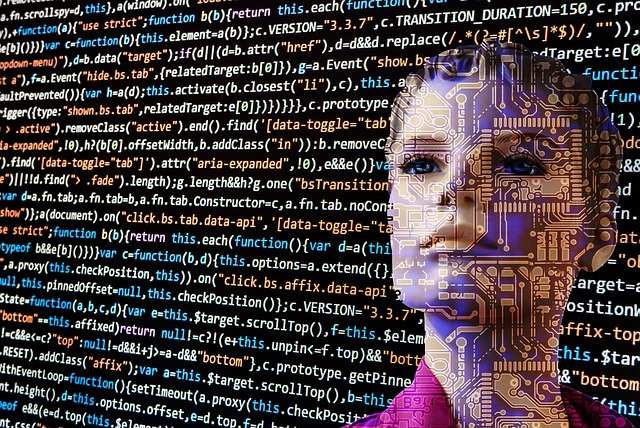Artificial Intelligence in Information Security: Leveraging AI for Cyber Defense

Artificial Intelligence (AI) is revolutionizing the landscape of information security through its ability to anticipate threats and respond in real-time. This blog post explores the critical role of AI in cyber defense, discussing how it enhances information security and aids in combating the rapidly evolving cyber threats.
1. ‘The Dawn of AI in Cyber Defense: What’s the Big Deal?’
Artificial Intelligence (AI) has emerged as a game-changer in the field of information security, revolutionizing the way organizations defend against cyber threats. With the increasing sophistication of cyber attacks, traditional security measures have proven to be inadequate in safeguarding sensitive data and critical systems. AI offers a proactive approach to cybersecurity by enabling real-time threat detection, rapid response, and continuous monitoring of network activities. By leveraging machine learning algorithms and predictive analytics, AI can identify patterns and anomalies that may indicate a potential security breach, allowing security teams to take timely action to mitigate risks. The integration of AI in cyber defense represents a significant shift from reactive to proactive security measures, empowering organizations to stay one step ahead of cybercriminals and protect their valuable assets.

1. An illustration showing AI as a shield protecting against various cyber threats
2. ‘How is AI Transforming Information Security Landscape?’
AI-powered Threat Detection:
One of the key ways AI is transforming the information security landscape is through its ability to enhance threat detection capabilities. Traditional security tools rely on predefined rules and signatures to identify known threats, leaving organizations vulnerable to zero-day attacks and sophisticated malware. AI, on the other hand, can analyze vast amounts of data in real-time, detect patterns, and anomalies that may indicate a potential threat. By continuously learning and adapting to new attack vectors, AI-powered threat detection systems can identify emerging threats before they cause significant damage.
Behavioral Analytics and Anomaly Detection:
AI is also revolutionizing information security by employing behavioral analytics and anomaly detection techniques. These technologies enable security teams to establish a baseline of normal user and system behavior, allowing them to quickly detect deviations that may signal a security incident. By leveraging AI algorithms to analyze user activities, network traffic, and system logs, organizations can identify suspicious behavior that may indicate unauthorized access, insider threats, or other malicious activities. This proactive approach to security monitoring helps organizations identify and respond to security incidents or disaster recovery in real-time, minimizing the impact of cyber attacks.
3. ‘Is AI the Silver Bullet for Cyber Threats?’
AI has undoubtedly shown great promise in enhancing cybersecurity defenses, but it is essential to recognize that it is not a one-size-fits-all solution or a silver bullet for cyber threats. While AI-powered tools can significantly improve threat detection, response times, and overall security posture, they are not immune to limitations and challenges. Firstly, AI systems rely heavily on the quality and quantity of data they receive for training and decision-making. If the data is biased, incomplete, or manipulated, it can lead to inaccurate predictions and vulnerabilities in the security infrastructure.
Furthermore, the rapid evolution of cyber threats requires a dynamic and continuously evolving defense strategy. Cybercriminals in the modern world are adept at finding ways to bypass AI-powered security measures, such as poisoning machine learning models, launching adversarial attacks, or exploiting vulnerabilities in AI algorithms. As such, organizations must complement AI technologies with human expertise, threat intelligence, and comprehensive security protocols to effectively defend against sophisticated cyber attacks.

3. An image depicting a silver bullet with AI symbol, representing the effectiveness of AI against cyber threats
4. ‘AI in Cyber Defense: A Double-edged Sword?’
AI in Cyber Defense: A Double-Edged Sword?
As organizations increasingly rely on AI for bolstering their cybersecurity measures, it is crucial to acknowledge the potential risks and ethical considerations associated with its implementation. One of the primary concerns is the black box nature of some AI algorithms, which can make it challenging to understand how decisions are made or to detect biases embedded in the system. This lack of transparency can lead to unintended consequences, such as discriminatory outcomes or vulnerabilities that could be exploited by malicious actors. Additionally, the use of AI in cybersecurity raises questions about privacy and data protection, as sensitive information may be collected and processed without clear consent or oversight.
As cyber threats continue to evolve, the integration of AI into information security strategies is no longer optional but a necessity. AI enables proactive defense, predictive analytics, and real-time responses, ensuring a robust and secure digital environment. However, the ethical implications and potential misuse of AI in cybercrime pose challenges that require ongoing discussion and regulation.





